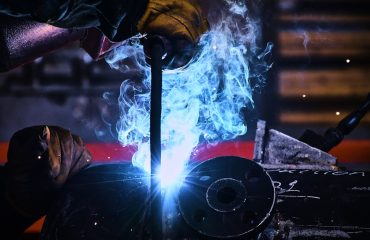Post-production is the crucial final stage where your audio and video project transforms from raw footage into a polished, captivating masterpiece. But even the most talented editors can overlook subtle flaws. This is where post-production quality monitoring (PQM) steps in, acting as the gatekeeper to ensure your final product meets the highest standards of quality and is ready for distribution.
1. Defining Your Quality Control Standards: Setting the Bar High
Before diving into the technical aspects of PQM, it’s crucial to establish clear and concise quality control standards. These standards should be tailored to your specific project and target audience. Consider factors like:
- Target Platform: A YouTube video has different quality requirements than a theatrical release. Resolution, frame rate, and audio specifications will vary.
- Genre: A documentary demands a different level of audio clarity than a music video.
- Budget: Higher budgets often allow for more rigorous quality control processes.
- Audience Expectations: Understanding your audience’s expectations regarding visual and audio fidelity is paramount.
- Technical Specifications: These should be documented clearly, including codecs, bitrates, resolutions, and frame rates.
Creating a detailed checklist based on these standards ensures consistency and allows for objective evaluation during the PQM process. This checklist should be accessible to all team members involved in the post-production workflow.
2. Implementing a Robust Post-Production Workflow: Streamlining the Process
An efficient workflow is essential for effective PQM. A well-structured system minimizes errors and speeds up the review process. Key elements include:
- Version Control: Implement a system to track different versions of your project, making it easy to revert to earlier stages if necessary.
- Collaboration Tools: Utilize cloud-based platforms or collaborative editing software to facilitate seamless teamwork and feedback sharing.
- Automated QC Tools: Leverage software that automatically checks for technical issues like dropped frames, audio glitches, and codec inconsistencies. These tools can significantly reduce manual workload.
- Centralized Asset Management: A well-organized media asset management (MAM) system ensures easy access to all project files and metadata, streamlining the review process.
- Clear Communication Channels: Establish clear communication channels for reporting and resolving issues identified during the quality control process.
A streamlined workflow prevents bottlenecks and ensures that the PQM process runs smoothly and efficiently, preventing delays and costly rework.
3. Manual Quality Control: The Human Eye and Ear
While automated tools are invaluable, manual QC remains a crucial component of PQM. A trained eye and ear can detect subtle issues that automated systems might miss, such as:
- Audio Issues: Background noise, audio sync problems, inconsistent levels, and distracting artifacts.
- Visual Issues: Color inconsistencies, jump cuts, shaky footage, and distracting elements in the frame.
- Narrative Flow: Assessing the overall pacing, clarity, and coherence of the narrative.
- Subtitles and Captions: Accuracy, timing, and readability of subtitles and captions.
- Overall Aesthetic: Evaluating the overall visual and audio appeal of the final product.
Dedicated QC personnel should meticulously review the final product, comparing it against the established quality standards. Detailed notes and feedback are essential for iterative improvements.
4. Leveraging Technology: Automated QC and Advanced Tools
Modern technology offers a range of tools to enhance the PQM process. Automated QC software can scan for technical flaws, while advanced monitoring tools provide detailed analysis of audio and video parameters. Consider:
- Automated QC Software: These tools automatically check for common issues like dropped frames, incorrect aspect ratios, and audio glitches.
- Waveform Monitors: Visualize audio levels and identify potential problems such as clipping or low levels.
- Vectorscopes: Analyze color accuracy and identify color imbalances.
- Histogram Monitors: Assess the distribution of brightness levels in the video.
- Loudness Meters: Ensure consistent loudness levels, complying with broadcast standards.
Integrating these tools into your workflow can significantly improve the speed and accuracy of your PQM process, leading to a higher quality final product.
5. Iterative Refinement and Feedback Loops: Continuous Improvement
PQM isn’t a one-time process; it’s an iterative cycle of review, feedback, and refinement. The feedback gathered during the quality control process should be used to improve both the final product and the PQM process itself. This involves:
- Addressing Issues: Promptly address any issues identified during the QC process.
- Revising Standards: Regularly review and update your quality control standards to reflect changes in technology and audience expectations.
- Training and Development: Invest in training for your team to improve their skills in identifying and resolving quality issues.
- Process Optimization: Continuously analyze your PQM workflow and identify areas for improvement.
- Data Analysis: Track the types and frequency of issues identified during QC to identify patterns and prevent future problems.
By embracing a culture of continuous improvement, you can ensure that your PQM process remains effective and efficient, delivering consistently high-quality results.
Effective post-production quality monitoring is not just about catching errors; it’s about ensuring your vision is realized with the highest fidelity. By implementing the strategies outlined above, you can transform your post-production process and deliver exceptional results.
SEO Tags:
Post-production quality control, Video QC, Audio QC, Media asset management, Automated QC software




